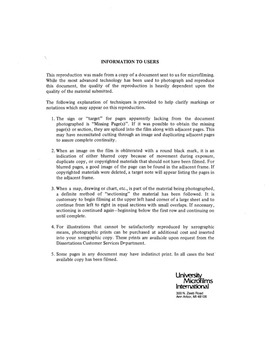| dc.contributor.author | Numbere, Daopu Thompson, | en_US |
| dc.date.accessioned | 2013-08-16T12:28:35Z | |
| dc.date.available | 2013-08-16T12:28:35Z | |
| dc.date.issued | 1982 | en_US |
| dc.identifier.uri | https://hdl.handle.net/11244/5009 | |
| dc.description.abstract | The (Laplace's) equation describing the distribution of potential was solved by the Boundary Element Method (BEM) also called the Boundary Integral Element Method (BIEM). This method utilizes the superposition of singular solutions whose distributions are determined by the boundary conditions of the problem. The streamlines are generated assuming single phase flow (unit mobility assumption). The streamtubes are assumed to be linear tubes of rectangular cross section. Streamlines and streamtubes were generated for a homogeneous reservoir assuming it was bounded on all sides by sealing faults. Then, it was assumed to have an oil-water contact (constant pressure) boundary on one side, while the remainder of the boundary remained sealed. Oil recovery calculations were made for a stream drive process in each streamtube generated and added together to give the recovery in the entire field or pilot area. Finally, the reservoir was treated as a piecewise homogeneous reservoir having two regions of unequal permeabilities. The streamlines and streamtubes were again generated and oil recovery calculated for each of the two types of boundary arrangements mentioned above. | en_US |
| dc.description.abstract | A general streamline/streamtube simulation method applicable to homogeneous, anisotropic, as well as piecewise homogeneous porous media is described with its application to steamflood recovery prediction. The boundaries of the media can be of any arbitrary but smooth shape with boundary conditions that can be any of or combination of either Neuman, Dirichlet, or mixed boundary conditions. | en_US |
| dc.description.abstract | Steamflood prediction was made assuming each streamtube existed in isolation. Thus, there was no heat exchange between streamtubes. For homogeneous reserviors, recovery was calculated using the Marx and Langenheim equations. For the piecewise homogeneous reservoir, new equations were derived for the location and rate of advance of the steam front while it is in the second permeability region of a streamtube containing two permeability regions. Comparison of the potentials obtained by the BEM and those obtained analytically for simple domains confirm the validity of the Boundary Element Method. This method provides a general technique to properly model different reservoirs with arbitrary boundaries and boundary conditions, particularly, piecewise homogeneous reservoirs which had not been possible using the method of images. | en_US |
| dc.format.extent | xiv, 344 leaves : | en_US |
| dc.subject | Engineering, Petroleum. | en_US |
| dc.title | A general streamline modelling technique for homogeneous and heterogeneous porous media, with application to steamflood prediction. | en_US |
| dc.type | Thesis | en_US |
| dc.thesis.degree | Ph.D. | en_US |
| dc.thesis.degreeDiscipline | Mewbourne School of Petroleum and Geological Engineering | en_US |
| dc.note | Source: Dissertation Abstracts International, Volume: 43-05, Section: B, page: 1588. | en_US |
| ou.identifier | (UMI)AAI8224202 | en_US |
| ou.group | Mewbourne College of Earth and Energy::Mewbourne School of Petroleum and Geological Engineering | |
